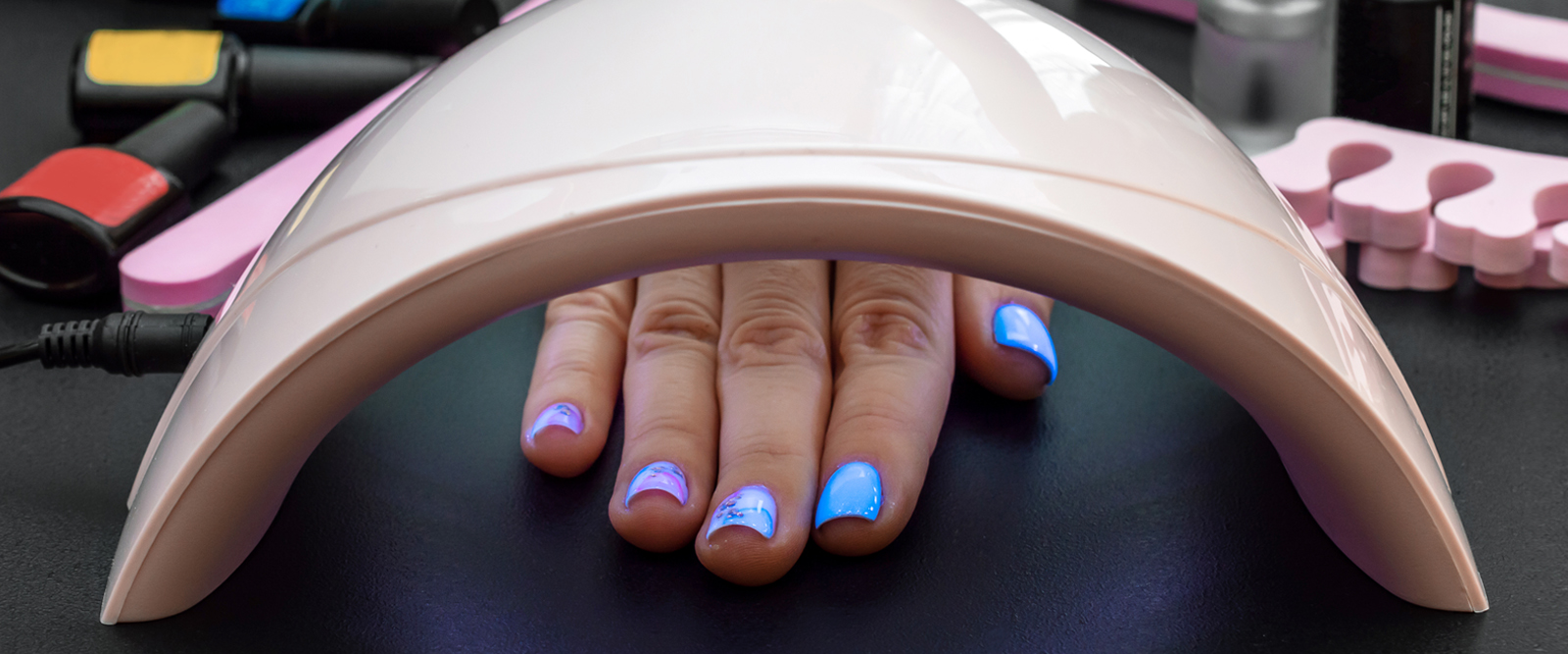Are UV Nail Dryers Safe?
A go-to device for drying gel manicures, ultraviolet A lights are under scrutiny as a recent study shows exposure may impact your health.


A recent study published in the Nature Communications journal has prompted new concerns over the use of UV devices for drying nails, as the exposure to the radiation these dryers emit was found to cause cellular damage.
Gel manicures have gained popularity in recent years, thanks to their chip resistance and long-wear formulas. Many gel formulations require a UV nail dryer to set, or cure, the coatings, and these devices emit ultraviolet A light, which may pose health risks.
In this study, when a UV nail dryer was directed to human cells for two 20-minute intervals in one day (as well as for single 20-minute exposures on three consecutive days), the in vitro test showed damage to the cells’ DNA. And while it may only take a minute to cure a colorful gel coat, the potential for cumulative exposure could be cause for caution, says Dr. Shari Lipner, an associate attending physician at NewYork-Presbyterian/Weill Cornell Medical Center and associate professor of clinical dermatology and director of the nail division at Weill Cornell Medicine.
“[The research] definitely reinforces our concerns,” says Dr. Lipner, who shared with Health Matters her insights on the study, plus advice on how best to use these devices, if at all.
What did this study find?
Dr. Lipner: In the study, they had three different cell types, two human and one mouse, and they irradiated the cells with UV light from gel dryers. Basically, they were shining the light onto the cells. Researchers then detected the cells had both DNA and mitochondrial damage.
So we can learn from this cell line experiment but should also keep in mind that it wasn’t an experiment done in humans.

Dr. Shari Lipner
UV nail dryers have been around for years, and there’s been speculation around their emissions. What new insights can we glean from this particular study?
We already knew there were case reports of people who had gel manicures with UV dryers and developed skin cancers, specifically squamous cell cancers. But we don’t know for sure if the UV dryers were responsible.
There have been studies looking at the emissions from UV dryers, and some of them showed that they emitted dangerously high levels of UV radiation.
In this study, cell lines were directly radiated with UVA light from a gel curing device, and the cells developed DNA damage. When there’s DNA damage, cells may start to proliferate out of control because they’re not responding correctly to normal signals in the cell cycle.
This study reinforced our concerns and underscores that we need to educate the public about how to either avoid these dryers or use them safely.
If you choose to avoid gel applications, what are some alternative options?
Alternatives would be using regular nail polish or trying pigmented dip powders for your manicures. Both of those do not require using that light.
If you choose to get a gel manicure or pedicure, are there precautions you should take?
Protect your skin and apply broad spectrum sunscreen SPF 30 or higher. For manicures, you could wear gloves with cutouts. I would also recommend people have a skin exam by a board-certified dermatologist once a year. And if someone sees anything unusual on their skin, they should go to a board-certified dermatologist promptly.
What unusual markers should a person look out for?
Squamous cell carcinomas may present as a little grain of sand on the skin to start. It could be a little rough spot. It could be a red patch with scale or a crusty bump. Keep in mind that on light skin it could have more of a pink-red appearance. On dark skin, it could have a darker appearance.
If you have a lesion that doesn’t go away, get it checked out.

